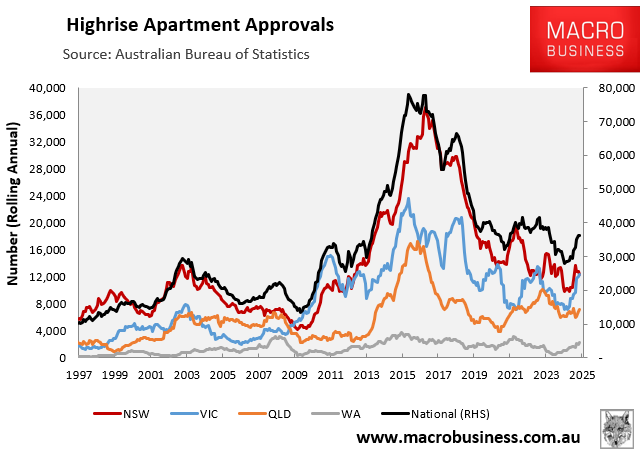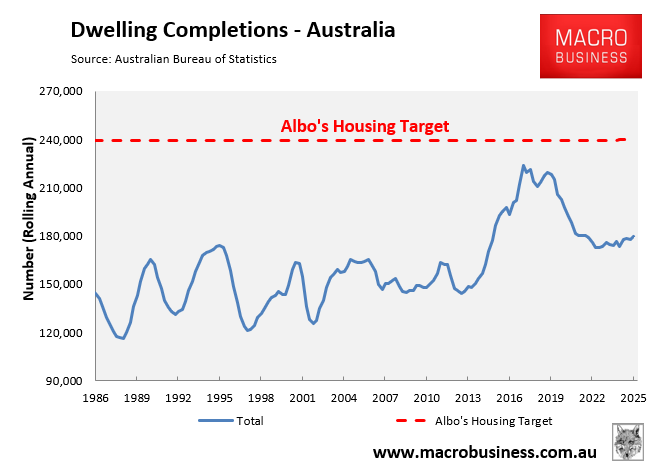Australia’s governments want to ‘solve’ the housing crisis by pushing Australians into high-rise apartments.
They ignore that the 2010s decade saw the biggest boom in high-rise apartment construction in Australia’s history, concentrated in the nation’s major capital cities:

This unprecedented boom in high-rise apartment complexes resulted in a spike in construction faults and quality issues, such as cracked foundations, water leaks, balcony defects, and flammable cladding.
Notable examples include Sydney’s Opal and Mascot Towers, which had to be evacuated due to significant cracking.
These faults have cost owners and taxpayers millions in rectification fees.
A November 2023 NSW government strata survey found that more than half of newly registered buildings since 2016 had at least one significant defect, costing an average of $331,829 per building to fix.
Research by the Strata Community Association NSW revealed that waterproofing was the most common serious defect, followed by fire safety.
These issues were captured in the Four Corners Report, “Cracking up”, revealing a systemic failure to regulate and protect the buying public from shoddy workmanship.
Engineer Leith Dawes likewise warned that buying an off-the-plan apartment in Australia had devolved into a game of “Russian roulette”, given the myriad of construction faults that are often unreported.
Four Corners and A Current Affair also reported on the expensive strata fees imposed on high-rise apartment owners.
The Albanese government has set a target of building 1.2 million dwellings over five years, or 240,000 units each year for five years in a row, with the majority of those being high-density apartments in our major cities.
This amount of construction would be larger than anything Australia has ever achieved, given that the record single year of new home construction was only 223,600 in 2017 amid the aforementioned problematic apartment construction boom.

In late 2023, Bronwyn Weir, a construction lawyer, cautioned that accelerating the construction of high-rise apartment complexes would inevitably lead to cost-cutting and quality issues.
“Australia’s chronically undersupplied housing market is heading for another development boom and apartments will lead the way”, wrote The AFR’s Michael Bleby.
“On current estimates, 50% of what will be built will have serious defects”, Weir told The AFR.
Indeed, new consumer research from Equifax shows that consumers are concerned about builders cutting corners and poor quality to meet housing targets:
- 89% are concerned builders will cut corners to deliver homes faster
- 90% are concerned that builders will cut corners to reduce costs
- 51% are only a little confident or not confident at all about the quality and long-term durability of newly built apartment buildings or build-to-rent developments
Instead of seeking a high-rise slum future, the federal government should limit immigration to a level that is consistent with the country’s ability to provide high-quality housing and infrastructure, as well as the natural environment’s carrying capacity (including water resources).
Lower, sustainable immigration (demand) would encourage the building industry to prioritise quality over quantity in construction while also alleviating the nation’s rental crisis.
Buyers and taxpayers are bearing the consequences of the unmitigated failure of the high-rise apartment boom of the last decade.
Australia should avoid repeating past mistakes by rapidly increasing construction rates to meet the demands of excessive immigration-driven population growth.

